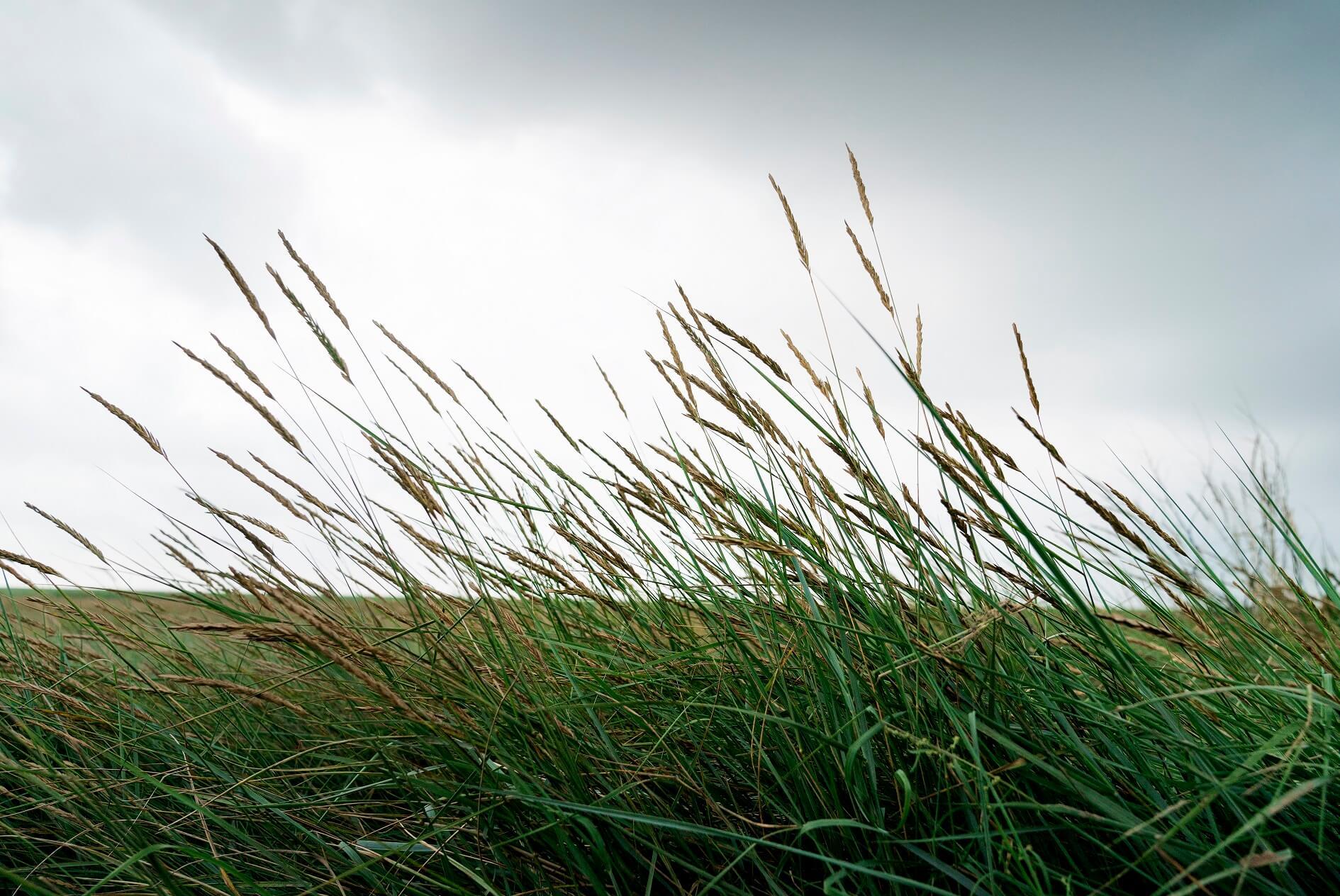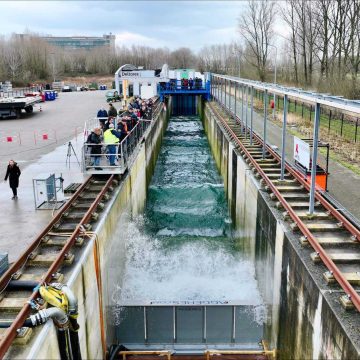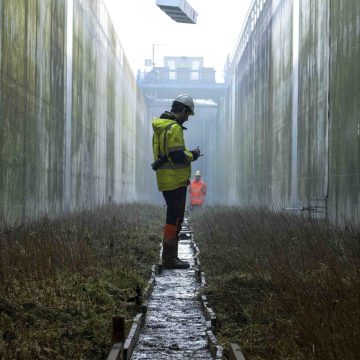Green dikes rather than strips of asphalt – a Q&A with Barry Ros
Barry Ros is a project manager for the Fryslân water authority, which wants to investigate how natural measures can help to make future-resilient dykes. Wetterskip Fryslân, together with Deltares, University of Twente and TU Delft, is studying the effect of salt marsh grass and foreland on the force of waves reaching the dyke. As a result, a dyke may need less space.

In September 2023, the water board removed blocks of soil from the outer dike salt marsh east of the village of Peazens-Moddergat in Friesland. The blocks of soil were taken to the Delta flume in Delft for investigation. In February and March, a superstorm was simulated in the Delta flume with extreme waves, measuring the wave-damping effect of the salt marsh vegetation.
What do the Frisian salt marshes look like?
‘There are salt marshes and summer polders (the parts of the salt marsh used for grazing cows, sheep or horses) near a lot of dikes in Friesland. This foreshore sometimes extends for several kilometres. The blue-grey grass that grows there is called Sea Couch. This research on this salt marsh vegetation is new for us: most of our past experience is with studies of dike strength.’

What is the condition of the dikes in the north?
‘Some of the dikes with hard revetments no longer meet current standards, which were adapted in 2017. Asphalt revetments were often applied to those dikes in the 1970s and they no longer meet today’s requirements. We are working hard on the implementation of the Flood Protection programme, combining ‘hard’ and ‘soft’ measures to upgrade dikes.’
Why are you focusing on natural measures?
‘If the research demonstrates that the salt marsh grass attenuates the waves, we can adapt designs to build more sustainable dikes that take up less space or require less clay, asphalt and concrete. In addition, we want to strengthen natural values and improve biodiversity. And appearances matter, too. A green dike looks better in the salt marsh landscape than a strip of asphalt.’
What will the water authority do with the results?
‘We expect to obtain the first results this summer and then we can incorporate them in the design and specification of our dikes in the future. If the salt marsh grass reduces wave loads by 10 to 15 percent, that’s quite a good result with a significant effect on the upgrade work needed. This knowledge is also relevant to dikes in Groningen and Zeeland.'


